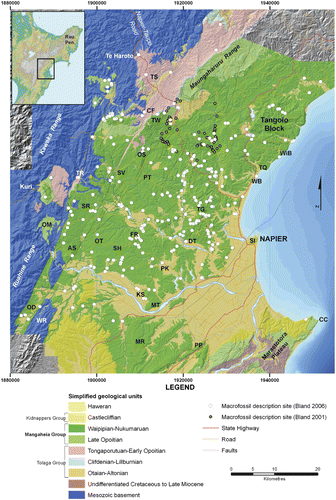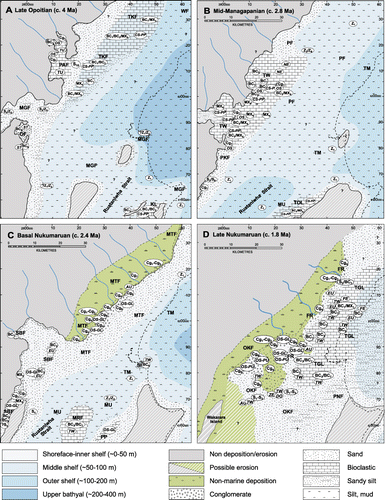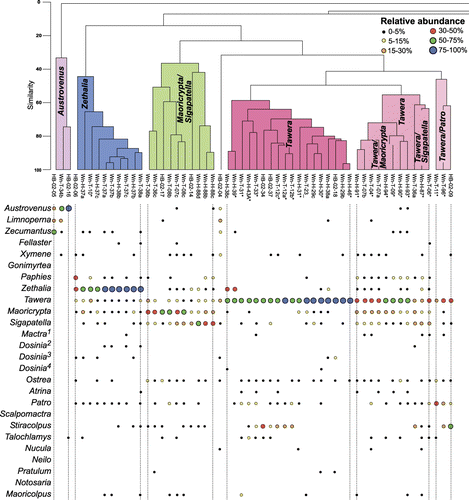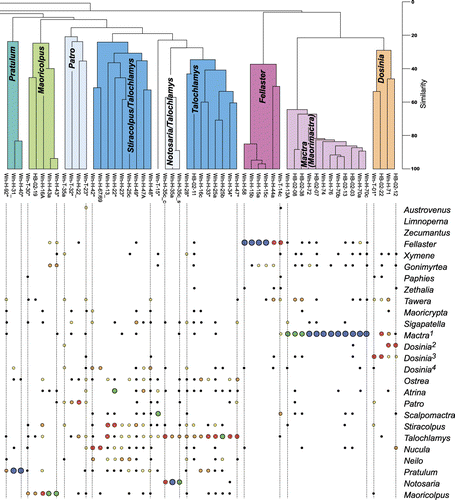Figures & data


Table 1 Summary of lithofacies in the Neogene succession cropping out in western and central Hawke's Bay (refer to Bland Citation2006 for discussion on individual lithofacies). Lithofacies are grouped into siliciclastic, bioclastic or mixed bioclastic-siliciclastic groups. Siliciclastic lithofacies are further sub-divided into four assemblages, primarily on the basis of grain size (sandstone, siltstone, conglomerate and volcaniclastic assemblages). A, abundant; C, common; R, rare; S, some; UC, uncommon. Faunal associations are summarised in .
Table 2 Summary of Neogene macrofaunal associations identified in this study for Late Miocene–Pleistocene rocks cropping out in western and central Hawke's Bay. Biofacies defined from field observations are denoted †. Lithofacies are summarised in . Tt, Tongaporutuan (early Late Miocene); Wo, Opoitian (Early Pliocene); Wm, Mangapanian (Late Pliocene); Wn, Nukumaruan (Early Pleistocene). Refer to Bland (Citation2006) for additional discussion and supporting evidence for interpretations.



